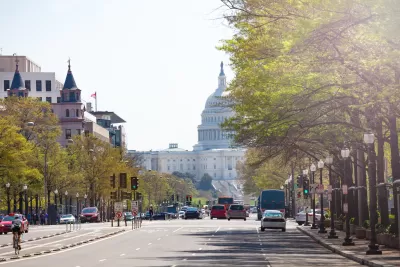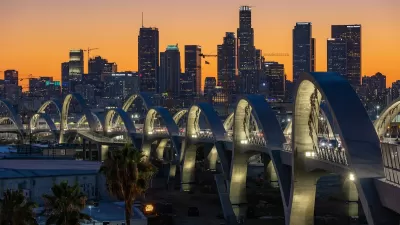To meet its climate goals and revitalize its downtown core, the District must expand its transit and urban amenities to meet the needs of a wider variety of people.

After a disheartening experience at a webinar ostensibly focused on downtown Washington, D.C.’s potential for post-pandemic economic recovery, Caitlin Rogger highlights the need for more multifaceted, multimodal investment in the District in a piece for Greater Greater Washington.
For Rogger, “Downtown recovery will take a lot more than just drivers: a key component is making it easy to get downtown without a car.” But the dismissive attitude of District officials and delayed transit projects signal a lack of willingness to engage with transit users, pedestrians, and cyclists and cater transportation options to their needs.
Moreover, it reflects an overall failure to engage with the needs of parents, elderly people, disabled people, and other groups. “Choices we make now–from employers subsidizing parking but not transit, to building multi-lane roads that are scary to cross for the young, old, and mobility-impaired, to insisting on full-time in-person work only–will determine who participates.”
Rogger points out that key elements of a successful post-pandemic recovery doesn’t necessarily differ much from things that people have advocated for for decades: “things to do, public space, room for sidewalks, bikes, and transit, good air and sound quality, public art–as opposed to space for cars.”
The District already has goals to reduce driving, lower carbon emissions, and encourage more mixed-use neighborhoods, but policy choices have to support those goals. “Workers aren’t the only type of person who can generate valuable activity–even profitable activity,” Rogger writes. Downtowns must be accessible, safe, and attractive for everyone, not just white-collar workers.
FULL STORY: Downtown DC’s recovery hinges on one word

Planetizen Federal Action Tracker
A weekly monitor of how Trump’s orders and actions are impacting planners and planning in America.

San Francisco's School District Spent $105M To Build Affordable Housing for Teachers — And That's Just the Beginning
SFUSD joins a growing list of school districts using their land holdings to address housing affordability challenges faced by their own employees.

The Tiny, Adorable $7,000 Car Turning Japan Onto EVs
The single seat Mibot charges from a regular plug as quickly as an iPad, and is about half the price of an average EV.

With Protected Lanes, 460% More People Commute by Bike
For those needing more ammo, more data proving what we already knew is here.

In More Metros Than You’d Think, Suburbs are Now More Expensive Than the City
If you're moving to the burbs to save on square footage, data shows you should think again.

The States Losing Rural Delivery Rooms at an Alarming Pace
In some states, as few as 9% of rural hospitals still deliver babies. As a result, rising pre-term births, no adequate pre-term care and "harrowing" close calls are a growing reality.
Urban Design for Planners 1: Software Tools
This six-course series explores essential urban design concepts using open source software and equips planners with the tools they need to participate fully in the urban design process.
Planning for Universal Design
Learn the tools for implementing Universal Design in planning regulations.
Smith Gee Studio
City of Charlotte
City of Camden Redevelopment Agency
City of Astoria
Transportation Research & Education Center (TREC) at Portland State University
US High Speed Rail Association
City of Camden Redevelopment Agency
Municipality of Princeton (NJ)





























